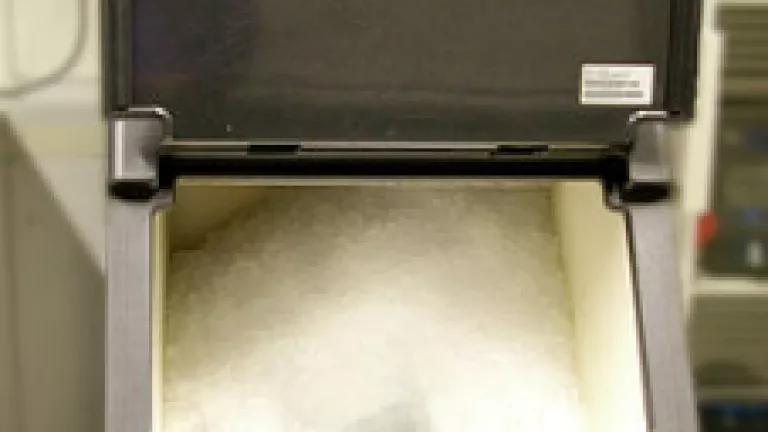
The Department of Energy this week finalized updated energy efficiency standards for the automatic commercial ice makers often found in hotels, restaurants, and health-care facilities. The new standards will require most ice makers sold in the United States to use 10 to 25 percent less energy beginning in 2018.
In total, the standards will net US businesses $942 million in energy savings from equipment sold over the next 30 years, with a typical owner saving between $200 to $800 over the life of the ice maker. The standards will also reduce electricity use by about 19 billion kilowatt-hours, equivalent to the annual energy use of 1.7 million American homes and will cut carbon pollution by almost 11 million metric tons, from products sold over the next 30 years. By 2030, the new ice maker standards also will cut carbon pollution emissions by 4 million metric tons - a small but important step toward President Obama's goal of 3 billion metric tons of carbon reductions from standards by 2030.
The first standards for ice makers were set by the Energy Policy Act of 2005, which set minimum standards for cube-type ice makers with capacities between 50 and 2,500 pounds of ice per day. This week's standards update the requirements for these machines and also expand the scope of coverage to machines with capacities of up to 4,000 pounds per day as well as flake, nugget, and tube-type ice makers. The efficiency levels of the standard vary based on ice maker type and capacity.
The efficiency gains are likely to come from more efficient motors and compressors and increased heat exchanger surface area. Even greater energy savings than those required by the new standards are achievable through the use of more efficient electronically commutated (ECM) motors and drain water heat recovery.
DOE issued a pre-publication notice of the rule on December 31, 2014, making it one of ten standards to be finalized by DOE last year - covering products ranging from electric motors to linear fluorescent lamps. This week, the ice maker standard was officially published in the Federal Register. In total, the final efficiency standards issued in 2014 will cut carbon emissions by 435 million metric tons and save Americans $78 billion on their electricity bills through 2030.
Missed opportunity for improved water efficiency
In addition to consuming energy, ice makers also consume a significant amount of water beyond the water that is physically turned into ice. Some ice makers use water to cool their condensers. DOE currently has standards for how much condenser water these types of ice makers can use, but unfortunately did not update those standards in the final rule.
Additionally, cube-type ice makers can use a significant amount of water in the ice-making process: while it takes 12 gallons of water to make 100 pounds of ice, some of these machines can use 30 to 40 gallons of water per 100 pounds of ice. DOE chose not to set a water efficiency standard for cube type ice machines.
This decision not to update and expand the water efficiency standards for ice makers is extremely disappointing, especially given the drought currently plaguing Texas and all seven states in the Colorado River basin -- including California-- that continues to put a strain on water suppliers and where future droughts are not a matter of if, but when.
